Lower blepharoplasty surgery, or a lower eyelid lift, provides the most effective and longest-lasting improvement for under-eye bags and the tear trough. Lower eyelid surgery must be carefully tailored to each patient's unique needs.
There are several factors to consider when deciding on the most appropriate surgical plan including how prominent the lower eyelid bags and tear trough are, if there is excess lower eyelid skin, and if there is loosening of the lower eyelid and/or changes in the shape and position of the lateral corner of the eye.
During a lower eyelid lift, the surgeon will make incisions either on the inside or outside of the lower eyelid, depending on the patient's specific case, and remove excess fat and/or skin. In some cases, the surgeon may also tighten the muscles and/or reposition the fat to create a more youthful and rested appearance.
Boca Raton oculoplastic surgeon Dr. Steven Fagien & plastic surgeon Dr. Elbert Vaca use a variety of safe and effective treatments to improve the appearance of sunken or hollow eyes, under-eye bags and dark circles. They will tailor the best treatment plan to address the underlying causes of each individual patient's eye-area concerns.

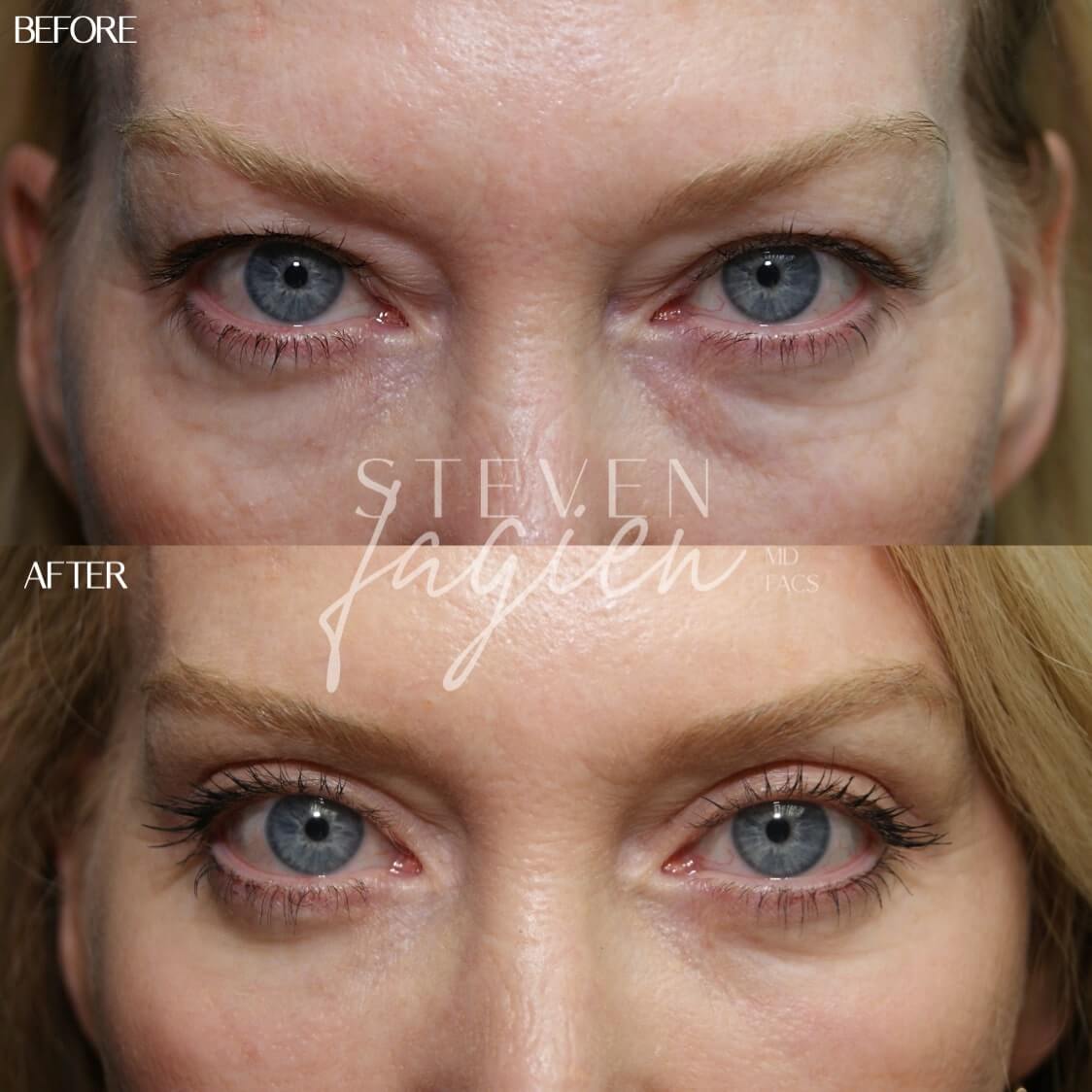
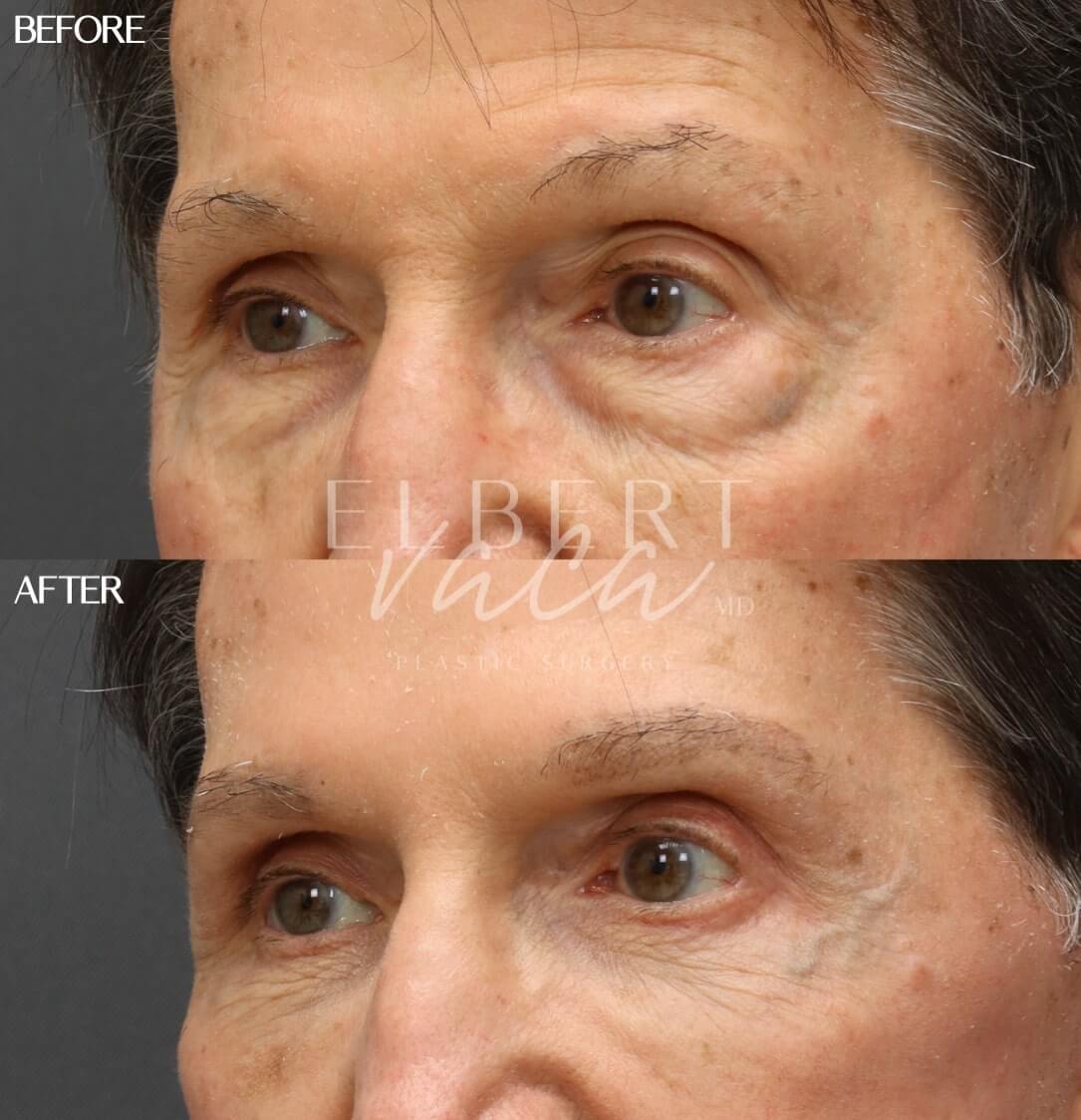
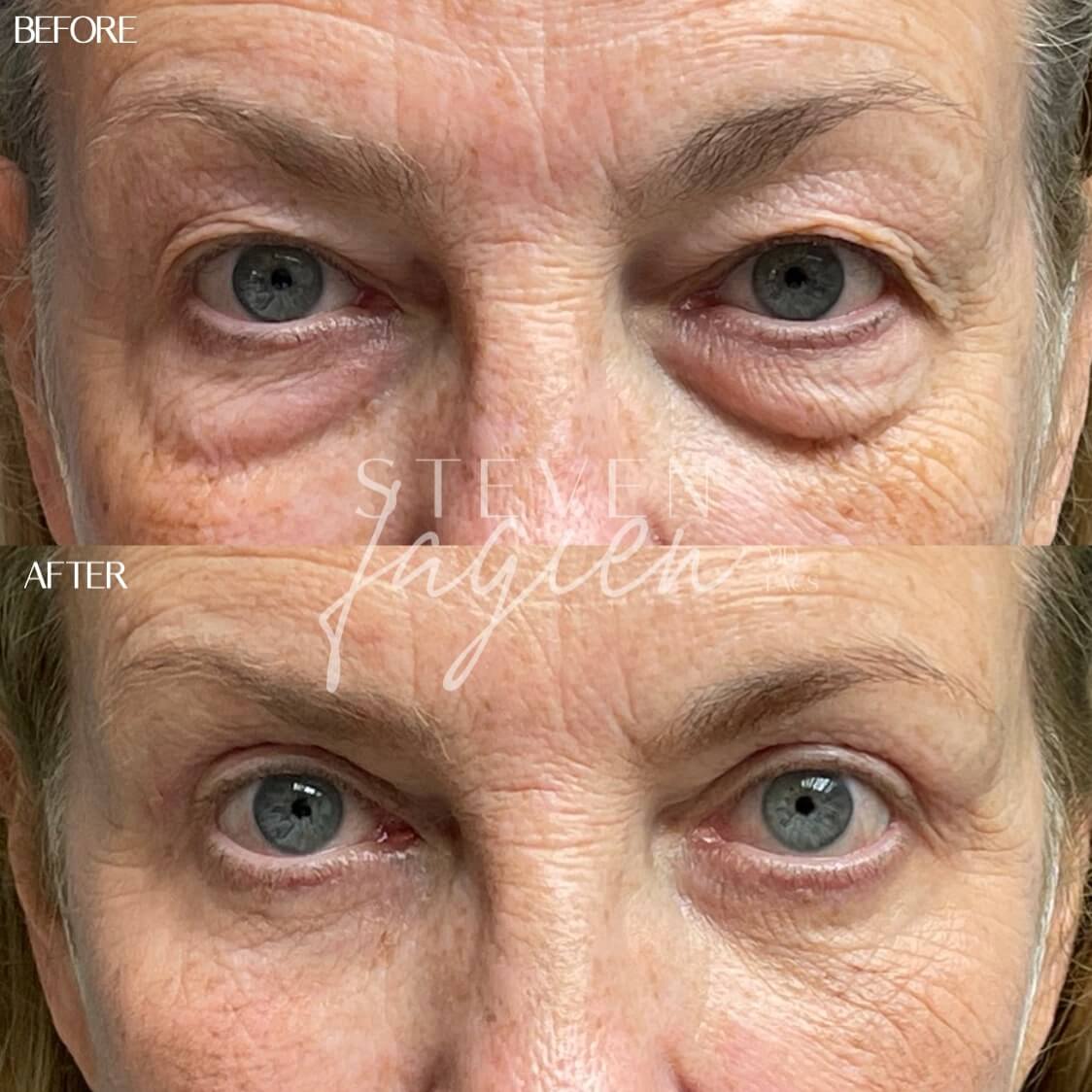
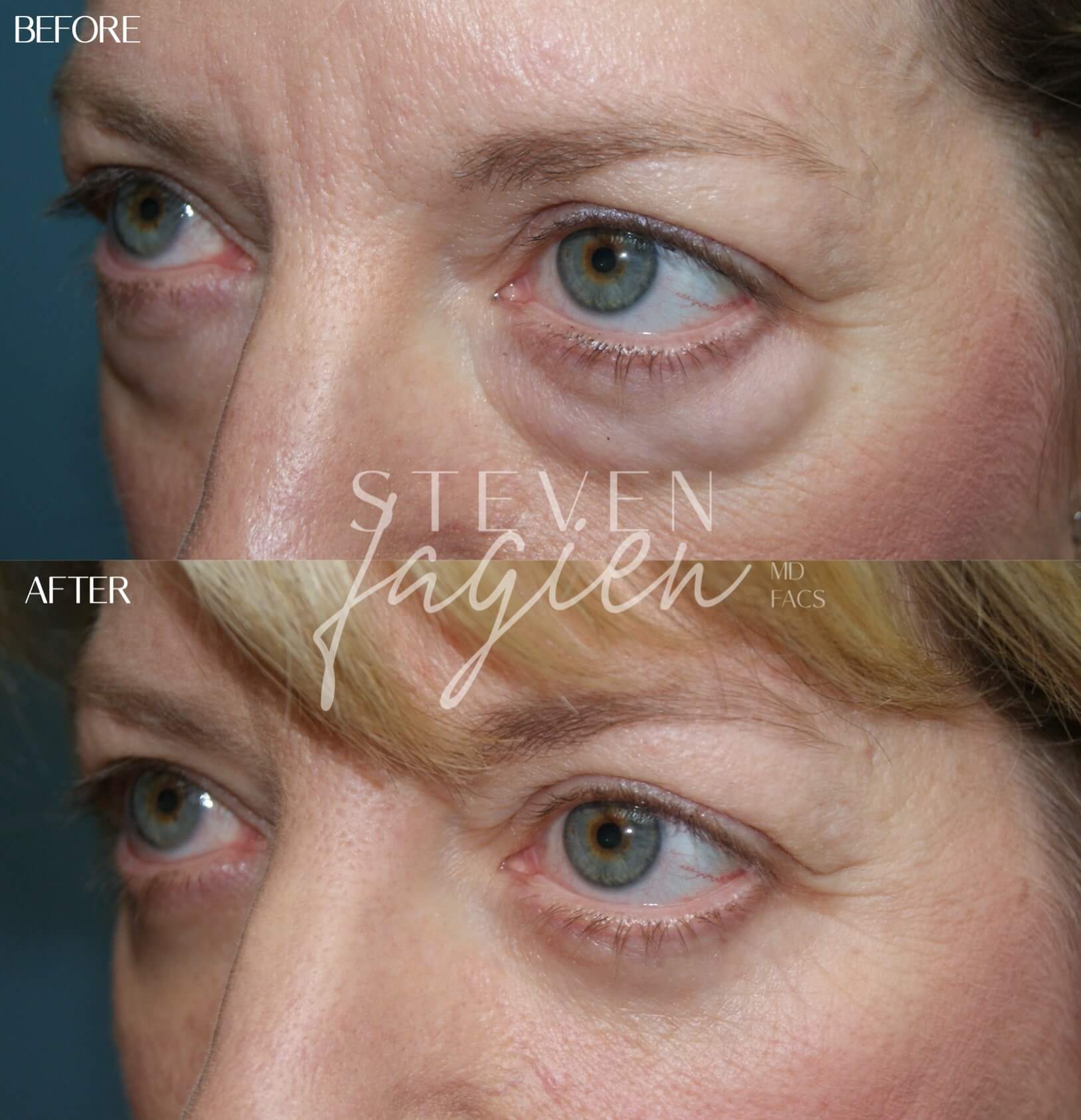
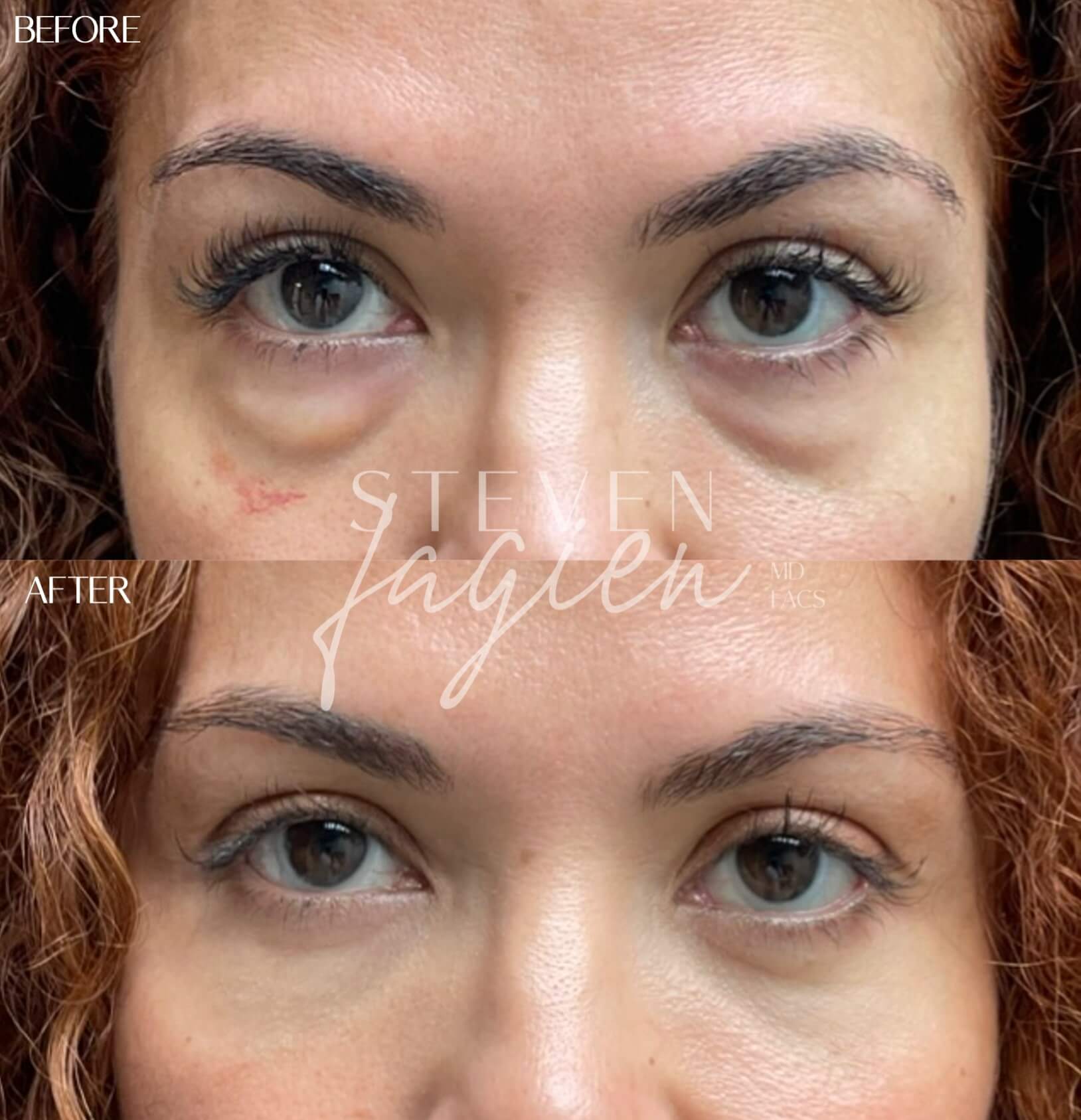
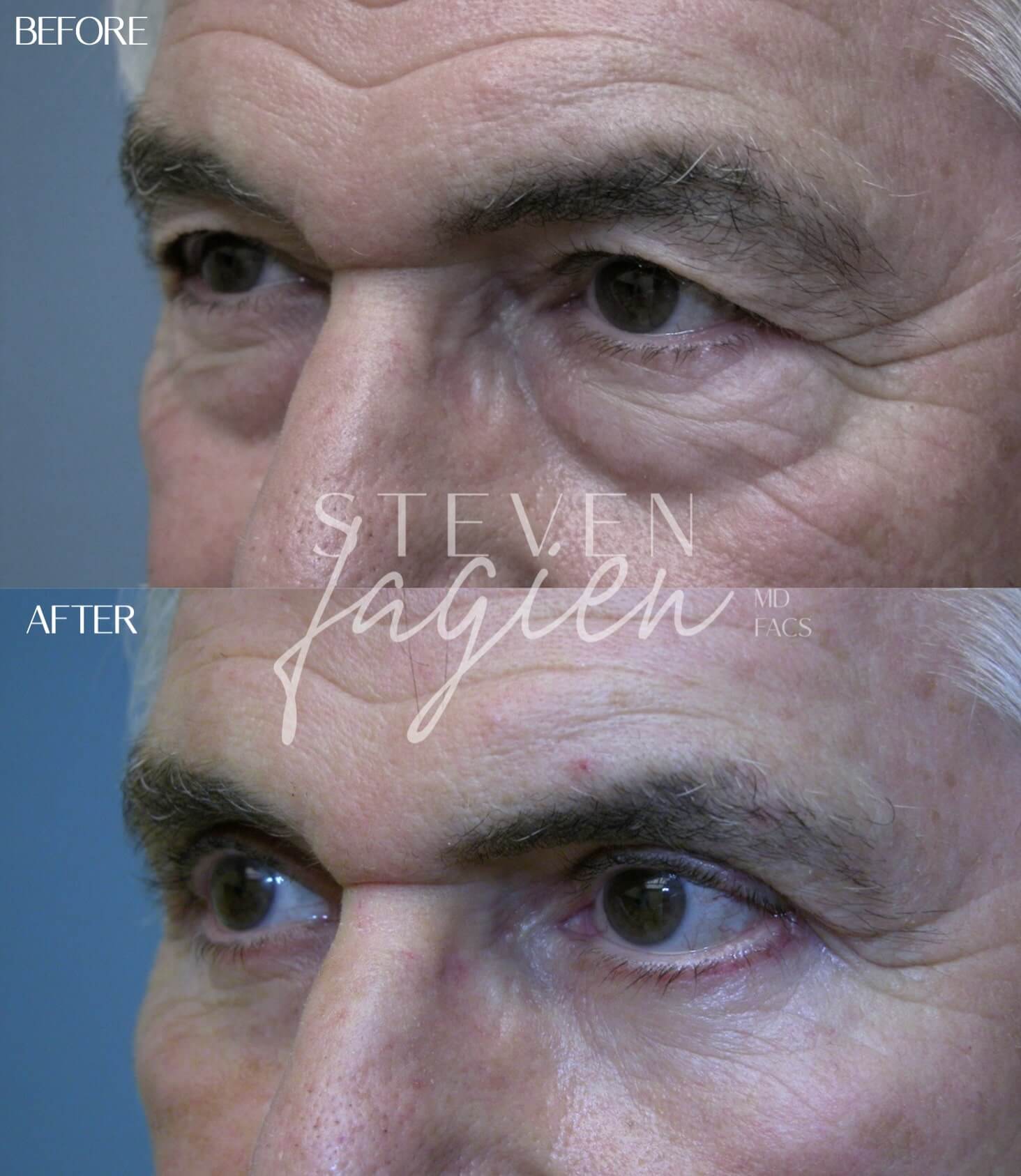
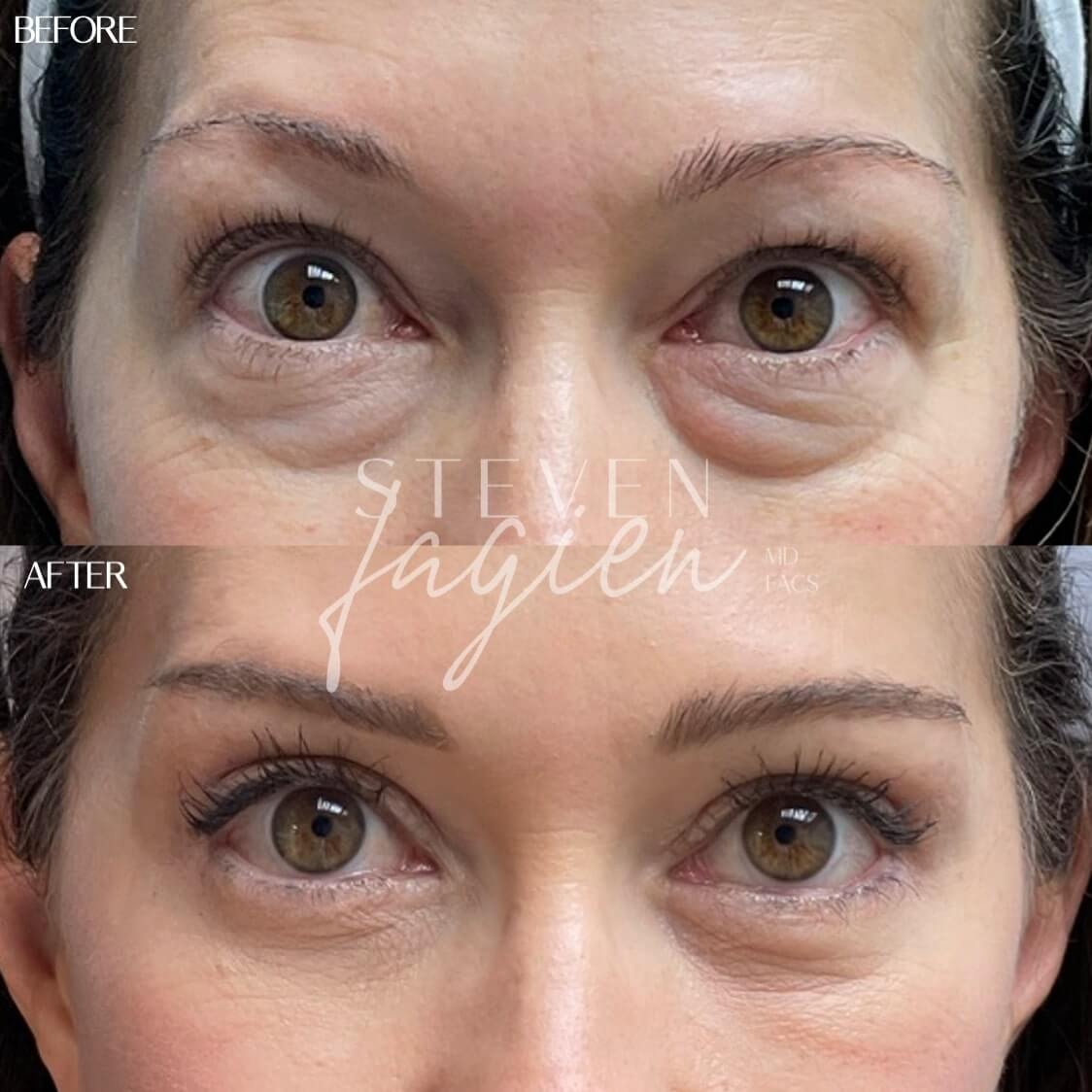
Often the result of genetics, lifestyle factors and aging, hollow or sunken eyes occur in patients with thin skin and very little fat to serve as padding due to volume loss. More common in those with slim faces and less body fat, this condition can cause a tired appearance.
Visible fat deposits called ‘eye bags’ that develop under the eyes are a natural result of the aging process. Over time, the skin below the eyes loses its elasticity while the fat behind the eyelids begins to bulge causing noticeable puffiness. This combination of changes leads to the development of more prominent under-eye bags that can contribute to a tired appearance.
Genetics, allergies, lack of sleep, diet and aging can contribute to the appearance of shadows or discoloration under the eyes. Over time, with advanced sun damage, fat loss and collagen breakdown, skin thins making blood vessels beneath the eyes become more visible, which causes discoloration or dark circles.
Shape and Position of the Outer Corner of the Eye
Due to genetics and aging, the outer corner of the eye can appear to “open” and lower in position, giving the eye an aged and sad appearance. World renowned oculoplastic surgeon Dr. Steven Fagien has developed a minimally invasive lateral canthoplasty technique that helps lift the lateral corner of the eye, giving the eye a more youthful appearance, if needed.
A specific technique called “transconjunctival” blepharoplasty is used to remove or reposition eye-area fat through incisions made inside the lower eyelid (no visible scar). If excess skin needs to be removed, then an additional incision is made just beneath the lower lash line (which is nearly undetectable once healed).
If there is excess skin and/or loss of tone of the lower eyelid muscle, then an additional incision is made just beneath the lower lashline. This incision is nearly undetectable once healed.
After excess skin and/or fat are addressed, the tissues surrounding the tear trough are reshaped and repositioned to create a smoother contour between the lower eyelid and cheek.
This procedure is often combined with a lateral canthopexy to help support the outer corner of the eye after a lower blepharoplasty.
A lateral canthoplasty surgical technique used to reinforce or lift the outer corners of the eyes after lower blepharoplasty. The goal of this procedure is to reconstruct the weakened or stretched canthal tendon that anchors the lower eyelid. Canthoplasty is ideal for improving a tired or sad expression, revising the unwanted effects of previous eyelids surgery, and restoring a more youthful appearance to the eye area. Dr. Fagien pioneered and developed his technique for canthal support or canthoplasty that has proven to be both effective and utilized by surgeons around the world. The technique utilizes existing incisions during surgery to preserve the natural shape of the lower eyelid when necessary tightening of loose tissue is performed during lower blepharoplasty.
Always consult with a qualified and experienced plastic surgeon to determine if a canthoplasty is the right procedure for your specific needs and goals.
Men seeking cosmetic procedures, including eyelid surgery, often have different goals and considerations than women. While both men and women may want to achieve a more youthful and refreshed appearance, men often prefer more subtle and conservative results to avoid appearing overly "done".
In addition, it is important to consider key differences in male eyelid proportions and male anatomy (such as thicker skin and stronger muscles). This is why it is imperative to consult with a highly specialized surgeon who has a great deal of experience with male patients to achieve the desired outcome while maintaining a natural and masculine appearance.
The risk of any major complication with eyelid surgery is very rare – nonetheless, all surgical procedures carry a degree of risk.
Eyelid scars are not visible or barely visible (on close inspection) in the vast majority of patients. However, scars may rarely be more visible in some patients.
Infection and bleeding are rare but can occur.
Eyelid surgery can result in temporary numbness of the eyelashes, but this recovers over time.
Irritation and inflammation around the white part of the eye (sclera and conjunctiva) can occur after surgery. This is known as chemosis and can occur mostly after lower eyelid surgery. It manifests as swelling around the eye that can sometimes look like conjunctivitis (“pink eye”) and can be a normal and expected response to surgery in this area. If this occurs, it typically presents 5 – 14 days after surgery and gradually improves over time with either medicated or lubricating eye drops or both.
We all have natural asymmetries between each side of our face and eyelids – some people more than others. While one of the goals of surgery is to minimize any pre-existing asymmetry between the eyelids, it is important to know that some asymmetry will still exist. After surgery, patients tend to scrutinize their face more intently and may notice some pre-existing asymmetries for the first time.